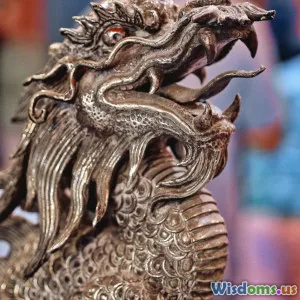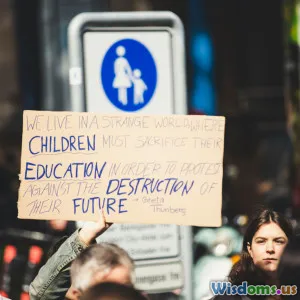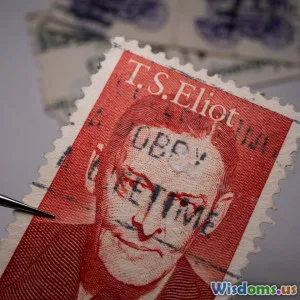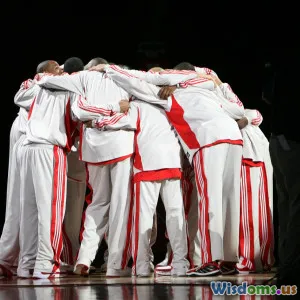
The Rise of Urban Legends and Their Roots in Folklore
8 min read Explore how urban legends emerge from ancient folklore, shaping modern myths and cultural fears worldwide. (0 Reviews)
The Rise of Urban Legends and Their Roots in Folklore
From chilling tales whispered in shadowed alleys to viral stories spreading across social media, urban legends have an uncanny way of capturing our imagination and fears. But beneath the modern sensationalism lies a rich tapestry woven from the threads of ancient folklore — stories that have evolved yet remain fundamentally human in purpose. This article unpacks the fascinating journey of urban legends, tracing their lineage to timeworn myths and exploring why they continue to compel us.
Introduction: The Magnetic Pull of Urban Legends
At their core, urban legends are contemporary folklore — narratives usually rooted in local settings or current times, featuring elements of mystery, caution, or morality. Their prevalence cuts across cultures and continents, weaving into the collective psyche through shared experiences and anxieties. More than just spooky tales, urban legends function as social mirrors and educational tools.
The question arises: why do these stories, often lacking factual grounding, persist and evolve? The answer lies in understanding their deep resonance with traditional folklore motifs, which have long attempted to explain the unexplainable, impart wisdom, or enforce societal norms.
The Foundations: What Is Folklore?
Folklore encompasses the customs, stories, proverbs, and beliefs passed down through generations within a community. It is an oral historical record and cultural cornerstone that shapes collective identity.
Example: The Baba Yaga and Her Influence
Consider Baba Yaga, the enigmatic witch of Slavic folklore. She represents the archetype of the dangerous, unpredictable guardian of the forest, simultaneously feared and respected. This figure encapsulates themes of magic, mystery, and moral decision-making, offering lessons on respect for nature and careful judgment.
Many urban legends echo such archetypes — cautionary figures, uncanny guardians, or moral enforcers — highlighting folklore’s enduring narrative patterns.
The Birth of Urban Legends: An Evolution of Oral Storytelling
Urban legends are the modern continuation of folklore, emerging primarily in the 20th century as societies urbanized and information traveled faster. These stories often appear as believable anecdotes about strangers or recent events but tend to possess an uncanny or sensational twist.
The Classic "Hookman" Story
A quintessential urban legend is the "Hookman," circulating in the United States since the mid-20th century. It tells of a couple parked at a lovers’ lane being threatened by an escaped murderer with a hook for a hand. This legend warns teens about the dangers of lingering in secluded spots, mirroring folklore’s traditional role — safeguarding community morals.
Such tales thrive on fear and social caution mixed with unverifiable details, adapting to cultural anxieties of each era.
Psychological and Sociological Roots
Beyond entertainment, urban legends serve important psychological and sociological functions:
- Sense-Making: They offer explanations for frightening or ambiguous situations, like mysterious disappearances or sudden deaths, granting a measure of control or understanding.
- Group Identity: Shared stories reinforce group cohesion. For instance, local legends often mark community boundaries, giving a small town its unique identity.
- Moral Lessons: They propagate social norms or warnings — the dangers of promiscuity, superstition surrounding technology, or stranger danger — functioning as modern parables.
Academic Insight
Jan Harold Brunvand, a pioneering folklorist, emphasized that urban legends "comment on aspects of modern life in a manner accessible to the uninitiated." His extensive collections show how everyday fears materialize in these stories, reflecting societal concerns from contaminated food scares to technological paranoia.
Urban Legends and Technology: A New Playground for Old Myths
The digital age has intensified the spread and evolution of urban legends, with social media acting as a modern campfire.
The "Slender Man" Phenomenon
Born from an internet forum in 2009, Slender Man is a tall, faceless figure stalking children. Though fictional, it rapidly gained a life of its own — inspiring art, stories, and even incidents of real-world violence. This phenomenon highlights folklore’s adaptive quality, evolving to address contemporary fears about the unknown lurking within digital realms.
Similarly, viral misinformation often takes on the form of urban legends, playing on collective fears about health, safety, or security, such as legends about contaminated vaccines or haunted locations.
Real-World Impact and Cultural Significance
Urban legends do more than entertain; their cultural footprint is significant:
- Tourism Boost: Haunted houses or cursed sites attract visitors intrigued by their legendary status.
- Media Influence: Books, films, and TV shows draw inspiration from popular legends, embedding them further into societal consciousness.
- Community Dialogue: They prompt discussion about communal fears, ethics, and beliefs, helping societies process rapid changes or crises.
Notable Example: The Loch Ness Monster
While often categorized as a cryptid legend, the Loch Ness Monster story, with origins stretching back to 6th-century folklore, has propelled Scotland into international fame. It reveals how an ancient myth can spawn modern legend, tourism industries, and scientific inquiries.
Conclusion: Why Urban Legends Matter
Urban legends are modern folklore—they preserve cultural memory, address contemporary anxieties, and foster social bonds. Their roots in ancient myths remind us that storytelling is an enduring human need, continuously shaping our understanding of the world.
When we recognize urban legends as evolving narratives rather than mere fabrications, we unlock richer insights into our collective psyche, fears, and values. Whether through a creepy tale shared at a party or a viral post online, these legends remain vital threads connecting us to our past and each other.
As the realm of folklore adapts evermore to modern life, urban legends stand as testimony to humanity's timeless quest to explain, to warn, to entertain, and ultimately, to connect.
Rate the Post
User Reviews
Popular Posts





















